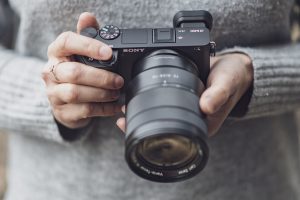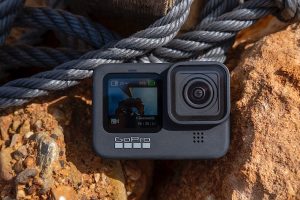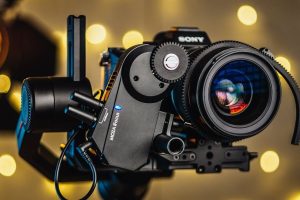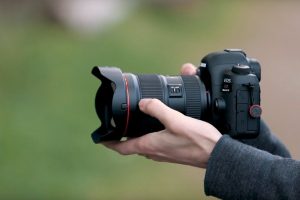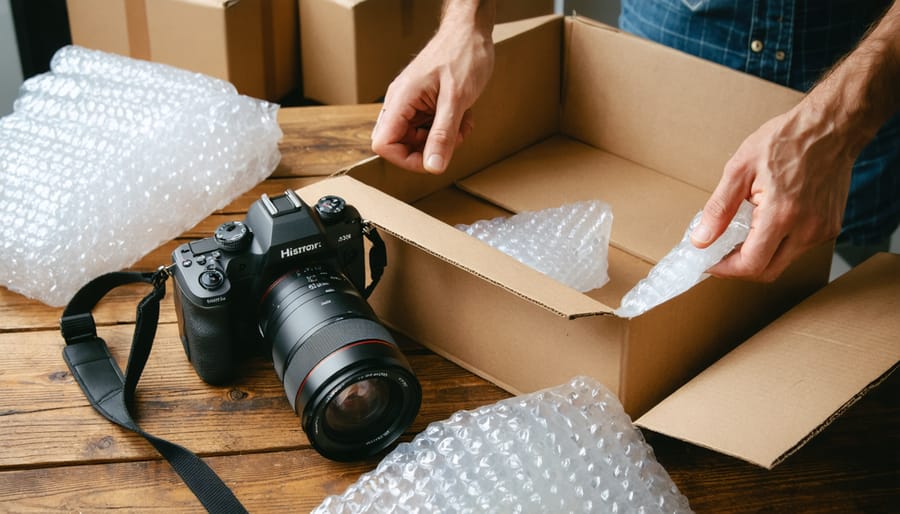
Search “camera rental” plus your city name in Google Maps to find local shops within driving distance—most offer same-day pickup and let you test equipment before leaving. Compare their day rates against subscription services like BorrowLenses or LensRentals, which ship nationwide within 1-2 days and often cost 30-40% less for multi-day projects. Calculate your break-even point: if you’re renting more than twice monthly, subscription models typically save money, while local shops win for emergency same-day needs or single-day shoots.
The rental landscape has transformed dramatically over the past five years. Traditional brick-and-mortar shops still dominate immediate-need scenarios—nothing beats walking out with a 70-200mm f/2.8 thirty minutes before a wedding. But smart rental solutions have introduced subscription tiers that fundamentally change the economics for frequent renters.
Consider this real-world comparison: A Sony A7R V rents locally for $85-120 daily versus $149-199 monthly through subscriptions with unlimited swaps. For a three-day weekend shoot, local wins at $255 versus $199 monthly minimum. But photograph two weekends monthly, and subscriptions deliver $510 worth of local rentals for under $200.
The key isn’t choosing one model over another—it’s understanding when each serves you best. Location matters enormously. Urban photographers often have five shops within twenty minutes, while rural shooters may drive two hours to the nearest rental counter. Your shooting frequency, equipment preferences, and flexibility around timing determine which path makes financial and practical sense for your specific situation.
The Traditional Rental Model: What You’re Actually Getting
The Math Behind Traditional Rentals
Let’s look at what traditional rentals actually cost when you need equipment for specific shoots.
**Weekend Wedding Scenario**
Imagine you’re shooting a Saturday wedding and need a Canon 70-200mm f/2.8 lens and a backup camera body. Most rental houses charge for a full weekend (Friday pickup, Monday return). Expect to pay around $75-$100 for the lens and $60-$80 for a professional camera body—that’s roughly $150 for one weekend.
**Week-Long Travel Assignment**
Planning a destination shoot? A Sony a7R V body rental runs approximately $200-$250 per week, while adding specialty glass like a 24-70mm f/2.8 adds another $150-$175. Your week-long rental easily hits $350-$400 before considering additional accessories or insurance fees.
**The Annual Reality Check**
Here’s where it gets interesting. If you rent equipment just once per month—perhaps for client work that demands gear beyond your kit—you’re spending $1,200-$1,800 annually on basic rentals. Photographers who regularly expand their arsenal for different projects often find themselves renting 2-3 times monthly, pushing annual costs toward $3,000-$5,000.
These numbers don’t include shipping fees for online orders, rush charges when you need gear immediately, or the time invested comparing prices and availability across multiple rental houses. For occasional needs, traditional rentals make perfect sense. But frequent renters should definitely crunch these numbers against alternative models.
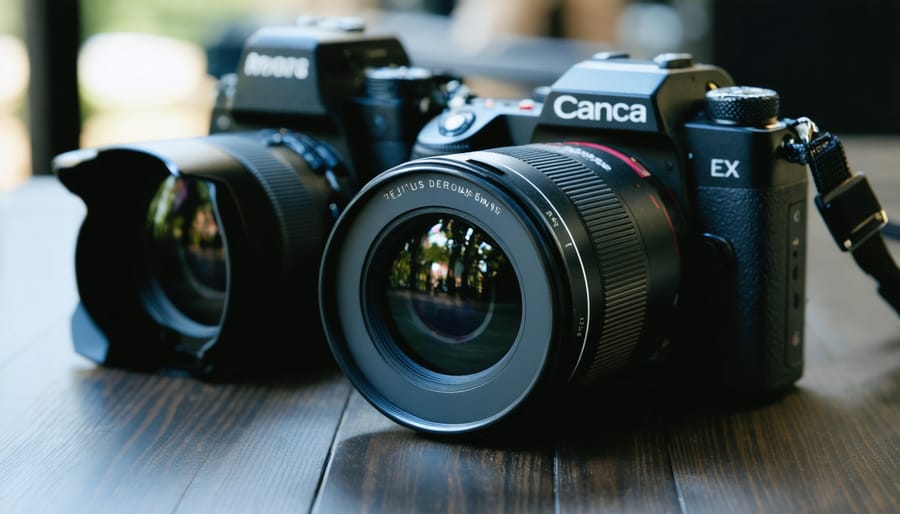
The Convenience Factor (Or Lack Thereof)
While the phrase “near me” suggests convenience, traditional rental shops often present unexpected friction points that can complicate your shooting schedule. Most brick-and-mortar rental houses operate standard business hours—typically 9-to-5 on weekdays—which means picking up gear for a weekend shoot might require leaving work early on Friday. Miss that window, and your plans evaporate.
Travel time adds another layer of complexity. Even if you find a rental shop within reasonable distance, you’re looking at multiple trips: one to inspect and collect the equipment, another to return it. In metropolitan areas, that could mean battling traffic or paying for parking twice. For photographers in suburban or rural locations, “near me” might actually mean a 45-minute drive each way.
Last-minute availability presents perhaps the biggest challenge. Need a 70-200mm f/2.8 for a shoot tomorrow? It’s likely already booked, especially during peak wedding season or holiday periods. Many rental houses also require substantial security deposits—sometimes hundreds or even thousands of dollars, depending on equipment value—tying up your cash or credit until the gear returns safely.
The return deadline creates its own stress. Most rentals operate on strict 24 or 48-hour windows, and late fees accumulate quickly, sometimes matching the rental cost itself.
How Photography Equipment Subscription Services Actually Work
Membership Tiers and What They Include
Most photography equipment subscription services structure their offerings into three main tiers, each designed for different shooting frequencies and gear needs.
**Basic or Starter Tiers** (typically $50-100/month) usually allow one item at a time with standard shipping. For example, BorrowLenses’ entry-level plan lets you keep gear for about a week per rental, perfect for weekend warriors who need a specific lens for occasional shoots. Think of this as the “try before you buy” tier—ideal if you’re testing whether a 70-200mm f/2.8 is worth the investment or need specialty gear quarterly.
**Pro or Enthusiast Tiers** ($150-250/month) open up access to multiple items simultaneously and often include priority shipping. ShareGrid Pro, for instance, allows members to rent two pieces of gear concurrently with faster turnaround times. This tier makes sense for photographers who book 2-3 paid gigs monthly and need varied equipment—perhaps a cinema lens one week and a lighting kit the next. You’re essentially paying what you’d spend on two traditional weekend rentals but gaining flexibility throughout the month.
**Premium or Studio Tiers** ($300+/month) provide unlimited swaps, premium gear access, and expedited shipping. LensRentals’ highest tier includes insurance upgrades and access to their entire catalog, including high-end cinema cameras and exotic glass. Professional photographers with frequent shoots find this tier cost-effective compared to maintaining an extensive gear collection or making multiple a la carte rentals monthly.
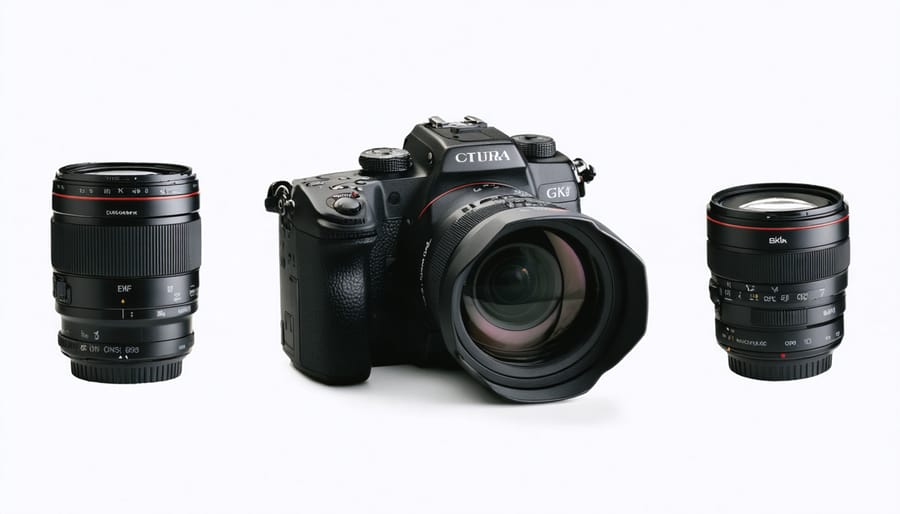
The Logistics: Shipping, Swaps, and Turnaround Times
Understanding how rental gear gets to you is crucial for planning your shoots. With subscription services, equipment typically ships via FedEx or UPS within one business day of your request, arriving within 2-3 days for most locations. This means ordering on Monday often means shooting by Wednesday or Thursday—not quite “same-day” but workable for many situations.
Most subscription plans let you swap gear unlimited times per month, though you’ll need to return one item before requesting another. Some services offer multiple concurrent items depending on your subscription tier. If you’re keeping a lens for two weeks, that’s your only item; return it Monday, and you can have something new by Thursday.
For truly urgent needs—like a last-minute wedding gig or a lens that breaks mid-assignment—local brick-and-mortar rentals remain unbeatable. Walking into a shop and leaving with gear in twenty minutes simply can’t be matched by shipping logistics.
One practical tip: many subscription services provide prepaid return labels, making drop-offs convenient at any FedEx location. Schedule your returns strategically—ship back on Friday, request new gear Saturday, and it arrives early the following week.
Insurance and Damage Policies Explained
Understanding insurance coverage is crucial before renting gear. Most rental companies offer damage protection for a daily fee, typically 10-15% of the rental cost. This usually covers accidental damage but excludes theft, water damage, or loss—read the fine print carefully. Deductibles range from $250 to $1,000 depending on equipment value.
Subscription services handle this differently. They often include damage coverage in monthly fees, distinguishing between normal wear and tear (covered) and negligence (not covered). A scratched lens filter from regular use? Covered. A dropped camera body? You’ll likely pay a deductible.
Traditional rentals expect equipment returned in the same condition, charging full replacement costs for damage without insurance. Keep your receipts and document equipment condition with photos before leaving the store—this protects both parties if disputes arise.
When Subscriptions Beat Local Rentals (And When They Don’t)
The Subscription Sweet Spot
Subscription rental services aren’t ideal for everyone, but certain photographer profiles find them absolutely transformative.
**Frequent renters** represent the most obvious sweet spot. If you’re renting equipment more than once or twice per month, the math shifts dramatically in favor of subscriptions. Consider a wedding photographer who shoots six events monthly—paying $150 per rental adds up to $900, while a $149 subscription provides unlimited access. That’s an immediate return on investment.
**Gear experimenters** discover subscription services answer their biggest question: “Should I buy this lens?” Before committing $2,000 to a 70-200mm f/2.8, you can live with it for weeks through a subscription, testing it across various shooting scenarios. This extended trial period—far more valuable than a weekend rental—helps you make confident purchasing decisions while expanding your creative toolkit.
**Professionals building their kits** strategically use subscriptions as a stopgap. While saving for that dream camera body, you maintain access to professional-grade equipment for paid work. It’s essentially financing your gear exploration without the commitment of actual financing.
**Photographers in underserved markets** benefit most dramatically. If you’re two hours from the nearest rental shop, subscription services level the playing field entirely. Rural and suburban photographers gain access to equipment inventories rivaling major metropolitan areas, with delivery timelines that make location irrelevant.
The common thread? All these photographers need regular, predictable access to gear beyond what they currently own, making subscriptions not just convenient but economically sensible.
When Local Rentals Still Make Sense
Despite the growing popularity of subscription services, local rental shops remain the better choice in several specific scenarios. Understanding when to choose traditional rentals can save you both money and headaches.
**Last-minute emergencies** top this list. When a lens breaks three hours before a wedding or you need a backup body for tomorrow’s shoot, local rentals are lifesavers. Most subscription services require 2-3 day shipping times, making them impractical for urgent situations. Your neighborhood rental shop can have you out the door with replacement gear in minutes.
**Single-use specialty items** also favor traditional rentals. Planning to shoot real estate next Tuesday and need a tilt-shift lens you’ll never use again? A one-day local rental makes far more sense than subscribing to a service. The same applies to underwater housings for that annual vacation or a 600mm lens for a once-yearly wildlife expedition.
**Extremely high-value equipment** often requires the security of face-to-face transactions. When renting a $15,000 cinema lens or a medium format camera system, many photographers prefer inspecting the gear in person, asking questions directly, and having local accountability. Some rental houses also provide on-site technical support and immediate replacements if issues arise.
Finally, **local market advantages** matter. Some cities have exceptional rental inventories with competitive pricing, knowledgeable staff who understand regional shooting conditions, and established relationships that lead to flexible terms. If you’re fortunate to have such a shop nearby, supporting that business while enjoying personalized service creates value beyond the transaction itself.
The Hidden Benefits Nobody Talks About
Test-Driving Your Next Purchase
Rental subscriptions offer something traditional purchases can’t—a genuine test drive before you invest thousands. Think of it as an extended audition for gear that might become a permanent part of your kit.
Portland wedding photographer Sarah Chen used this approach brilliantly. She’d been eyeing the Canon RF 70-200mm f/2.8, but at $2,899, she needed certainty. After subscribing for three months and shooting eight weddings with it, she discovered the lens perfectly suited her shooting style. When she finally purchased it, there were no regrets or buyer’s remorse.
Landscape photographer Marcus Rodriguez took the opposite path. He rented a $6,500 tilt-shift lens for a month-long architectural project, convinced he’d need to buy one. The rental revealed that while the lens delivered stunning results, he’d only need it twice yearly. He saved over $6,000 by continuing to rent as needed rather than buying photography gear that would mostly collect dust.
This try-before-you-buy approach works particularly well for expensive specialty lenses, lighting systems, or camera bodies you’re considering. You’ll learn the gear’s quirks, discover whether it fits your workflow, and make informed purchasing decisions backed by real-world experience rather than online reviews alone.
Creative Freedom Without the Financial Fear
Renting photography equipment creates a unique psychological freedom that ownership often restricts. When you’ve invested thousands in a lens, there’s tremendous pressure for every shoot to justify that purchase. You might hesitate to experiment with challenging lighting conditions or unconventional techniques because you’re protecting your investment rather than pushing your creative boundaries.
With rentals, that financial anxiety disappears. Want to try astrophotography with a fast wide-angle lens? Rent it for a weekend. Curious about product photography with macro equipment? Test it on an actual project before committing. This “try before you buy” approach transforms how you develop your skills.
I’ve watched photographers discover their signature style through rental experimentation. One wedding photographer I know rented three different prime lenses over consecutive months, ultimately realizing her aesthetic aligned perfectly with a 35mm—something she’d never have discovered if she’d simply purchased the 50mm everyone recommended.
Rentals also remove the intimidation factor around essential photography gear that seems financially out of reach. That flagship camera body or specialized tilt-shift lens becomes accessible for specific projects where it’ll genuinely elevate your work. You’re investing in your creative growth rather than accumulating equipment that might gather dust between uses.
This approach encourages genuine skill development because you’re constantly adapting to different tools, making you a more versatile photographer overall.
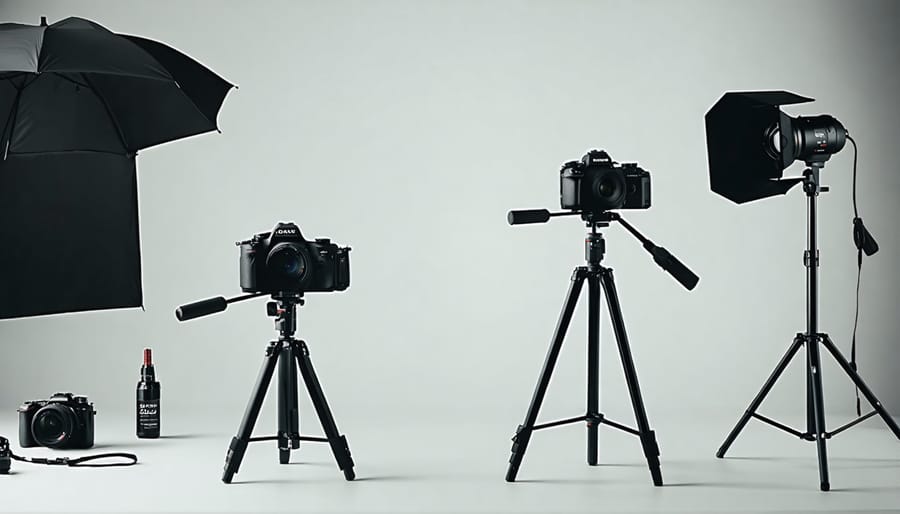
Major Subscription Services Compared
The subscription model has transformed how photographers access gear, but each platform takes a different approach. Understanding these differences helps you choose the service that aligns with your shooting style and budget.
**BorrowLenses** operates on a per-rental basis rather than a true subscription, making it ideal for occasional projects. You’ll find their catalog extensive—everything from Canon’s latest mirrorless bodies to specialized cinema lenses. Their strength lies in flexibility; rent exactly what you need for a wedding weekend without ongoing commitments. Pricing runs higher per day than subscription services, but you’re not paying when gear sits unused. Shipping typically takes 2-3 business days, so plan accordingly. This works beautifully for photographers who need specific equipment monthly or quarterly rather than weekly.
**LensRentals** follows a similar rental-by-project model but distinguishes itself through exceptional customer service and gear condition. Their equipment arrives immaculately maintained, and their support team genuinely understands photography workflows. You’ll pay premium prices, but many professionals consider it worthwhile for reliability. Their “Keeper” program lets you apply rental fees toward purchase if you fall in love with something—a practical option when testing expensive investments like that $2,000 70-200mm f/2.8 you’ve been eyeing.
**ShareGrid** takes a peer-to-peer approach, connecting you with equipment owners in your area. Think of it as the Airbnb of camera gear. Pricing often undercuts traditional rentals significantly, and local pickup eliminates shipping delays. The catalog varies dramatically by location—Seattle and Los Angeles offer abundant choices, while smaller markets prove limited. Quality control depends on individual owners, though ShareGrid’s insurance and rating system provide some protection. This platform shines for photographers building community connections while accessing affordable gear.
**Kitsplit** operates similarly to ShareGrid but caters more toward video production equipment. If you’re shooting hybrid content or need cinema cameras, monitors, and lighting packages, Kitsplit’s inventory reflects those needs. Their insurance coverage is comprehensive, protecting both renters and owners during transactions.
For subscription-based access, smaller regional services sometimes offer unlimited monthly rentals of specific gear categories. These work exceptionally well if you consistently need similar equipment—say, lighting modifiers for studio portrait photographers or telephoto lenses for wildlife enthusiasts.
The best choice depends on your usage patterns. Occasional renters benefit from pay-per-project platforms, while photographers needing gear multiple times monthly should calculate whether subscriptions reduce overall costs. Consider shipping timeframes against your project deadlines, and always read insurance policies carefully before confirming rentals.
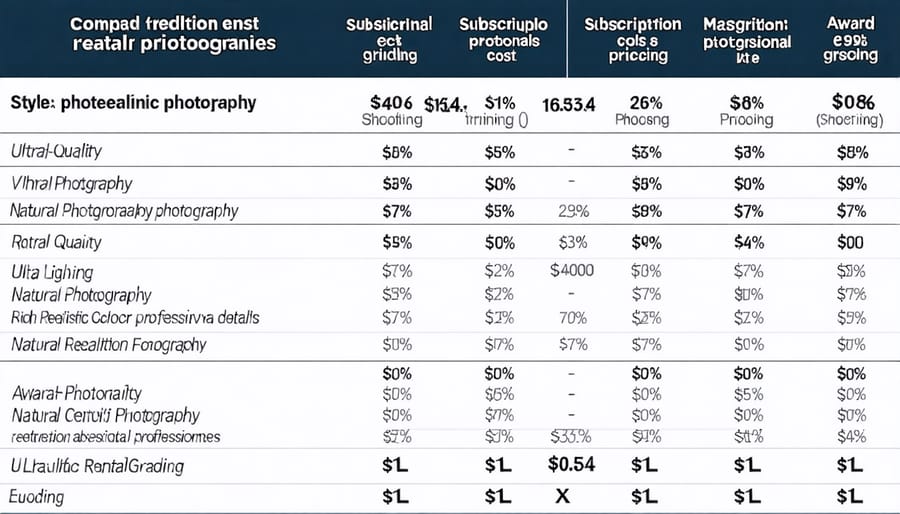
Making the Transition: What You Need to Know
Before you make the switch from traditional rentals to a subscription service, let’s walk through a practical framework to ensure you’re making a smart financial decision.
**Calculate Your Break-Even Point**
Start by reviewing your rental history from the past six months. Add up what you’ve spent, then compare it to subscription costs in your area. Most photographers find that if they’re renting gear more than twice per month, subscriptions become cost-effective. For example, if you’re spending $120 monthly on weekend rentals, a $99 subscription with unlimited swaps suddenly makes financial sense.
Here’s a simple formula: (Monthly subscription cost) ÷ (Average single rental cost) = Number of rentals needed to break even. If you consistently exceed that number, subscriptions win.
**What to Look for in a Service**
Not all subscription services are created equal. Prioritize providers with a diverse equipment catalog that matches your shooting style. Check their damage policies carefully—some charge hefty fees for minor wear, while others include normal use coverage. Review their shipping speed and reliability through customer testimonials, not just marketing materials. Distance to distribution centers matters; if gear takes five days to arrive, that weekend wedding job becomes impossible.
Don’t overlook equipment insurance options included in the subscription. Many services bundle basic coverage, but understanding the limits prevents nasty surprises if something breaks during your shoot.
**Smart Trial Period Strategies**
Most subscription services offer introductory rates or trial periods—use them strategically. Schedule your trial during a busy shooting month when you’ll genuinely test the service’s responsiveness. Order gear for an actual paid job, not just casual experimentation. This reveals how they handle time-sensitive requests and whether their equipment quality meets professional standards.
**Managing the Transition**
Consider running both systems simultaneously for one month. Keep your local rental relationship active while testing subscriptions. This safety net prevents disasters if shipping delays occur or equipment arrives damaged. Once you’ve confirmed reliability, you can confidently phase out traditional rentals while maintaining those local connections for true emergencies.
The decision between traditional local rentals and subscription services isn’t about finding a universal “best” option—it’s about matching the right solution to your specific shooting rhythm and business model. If you’re renting equipment more than once or twice a month, subscription services likely offer better value and convenience. For occasional needs or location-specific shoots, local rentals remain your most practical choice.
Here’s your action plan: Start by reviewing your actual rental spending over the past six months. Calculate not just the rental fees, but also your time spent picking up and returning gear. If the numbers suggest a subscription might work, most services offer trial periods that let you test the waters without commitment. Try one for a month during a busy shooting season to see if the model fits your workflow.
The landscape of gear access is evolving rapidly. Modern photographers increasingly treat equipment as flexible resources rather than permanent investments, and both rental models and subscription services are responding with better inventory, faster shipping, and more competitive pricing. Whatever path you choose, you’re no longer locked into buying every piece of equipment you might need—and that flexibility is transforming how we approach photography as both craft and business.







